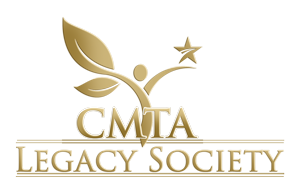@cmtausa What is Muscular Atrophy and how does it relate to CMT disease? Learn in this video! Be sure to save this video if you learned something new.
♬ original sound – Charcot-Marie-Tooth Assoc.
What is muscular atrophy?
Muscular atrophy is the thinning or loss of muscle tissue and mass.
What are the types of muscular atrophy?
As atrophy relates to muscles, there are three types of atrophy: physiologic, pathologic, and neurogenic.
Physiologic Atrophy
Physiologic atrophy is caused by not using the muscle enough – not moving around enough. Physiologic atrophy is recoverable, meaning that exercise of the muscle can help in rebuilding the muscle mass that was lost.
Pathologic Atrophy
Pathologic atrophy is caused by malnutrition and occurs with aging. Pathologic atrophy is recoverable, meaning that exercise of the muscle can help in rebuilding the muscle mass that was lost.
Neurogenic Atrophy
Neurogenic atrophy occurs as a result of injury to or disease of the nerve that controls the muscle, and this is the type of atrophy that Charcot-Marie-Tooth disease (CMT) causes. Neurogenic atrophy is not recoverable, meaning that when muscle mass is lost as a result of neurogenic atrophy, we can’t rebuild it.
Neurogenic muscle atrophy is a specific type of muscle tissue loss. Neurogenic muscle atrophy is muscle tissue that has wasted away (this has a specific medical definition) and the tissue has been replaced by fat.
CMTA-STAR Board Members Mary M. Reilly, FRCP, and Michael E. Shy, MD, conducted a study at MRC Centre in London that validated calf muscle fat-fraction levels on MRI as a means by which to accurately assess CMT progression. Since that study, they have continued to show, as have others, that CMT progression can be measured on MRI by measuring the fat that has replaced muscle tissue (not to be confused with fat layering that’s seen with obesity on MRI, as the two are completely different pathologies).
What does this mean for CMT patients?
In the context of CMT, any muscle not affected by neurogenic atrophy can be built up, can be strengthened, can gain mass; but any muscle affected by neurogenic atrophy cannot.
The more active we are able to remain, the more we preserve muscle mass. It’s easy for people with CMT to become sedentary. A sedentary lifestyle will lead to physiologic atrophy. While physiologic atrophy is recoverable, once neurogenic atrophy sets in with that same muscle, the atrophy becomes nonrecoverable. This is why CMT specialists and the CMTA recommends exercise for CMT patients. While exercise does not treat the cause of CMT, it does help maintain muscles that have not yet been affected by neurogenic atrophy.
CMT-induced neurogenic muscle atrophy is an unfortunate process that can’t be stopped or slowed. Its rate of progression cannot be reasonably predicted, and nor can the muscles/muscle groups that will be impacted (or even the order in which they’ll be impacted). Our only defense is a strong offense.
It’s critically important to stay as active as possible so that people with CMT are actively combatting physiologic atrophy before neurogenic atrophy takes over. Not only will this improve one’s overall CMT condition, but so will it improve one’s overall health.





